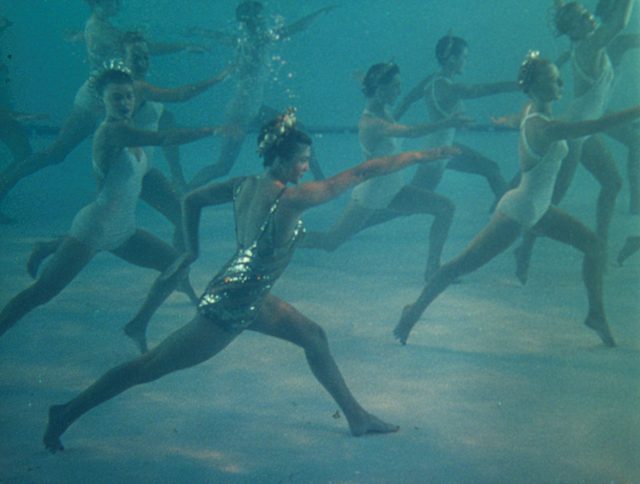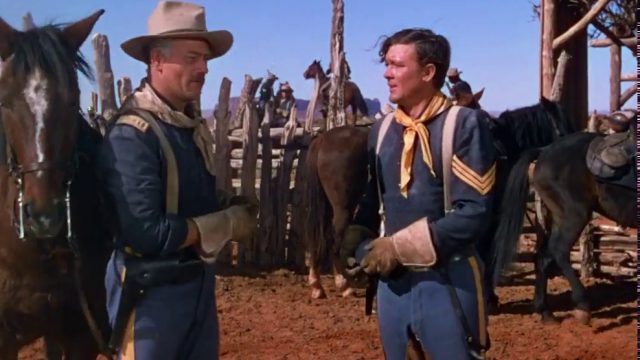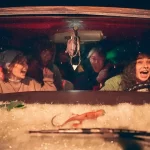TCM Classic Film Festival 2020: Special Home Edition: Part One, by David Bax

As you are probably aware if you’re reading this, in lieu of what was supposed to have been the 11th annual TCM Classic Film Festival in Hollywood this past weekend, the network devised a “Special Home Edition.” For four days straight, TCM aired movies that had played past festivals (as well as some that were meant to have played this year’s) along with interviews previously only seen by attendees. Tempting though it may have been to watch beloved favorites like A Star Is Born, Some Like It Hot, Casablanca or Singin’ in the Rain again along with Twitter friends, I chose to focus instead on new-to-me movies, things that I regretted not being able to see when they first played the festival, either because I wasn’t in attendance (I didn’t start going until 2016) or because of scheduling conflicts.
Unfortunately, I kicked things off with one that, in retrospect, I’m glad I didn’t sit through all the way back in 2010, Sidney Franklin’s The Good Earth (1937). It’s not just that the movie is two-plus hours of white actors (Paul Muni and Luise Rainer, among others) playing Chinese characters, though Rainer’s accent in particular is very difficult to take. And it’s not just the corny conservative values; this is a story in which hard work and fealty to simple traditions is rewarded by increased property ownership. On top of these things, it’s that, despite the lavish production values and impressively choreographed crowd scenes, there’s no heartbeat to this tale of a farming family in the years before, during and after the Chinese Revolution of 1911. Maybe that’s an attempt to make the whole film resemble its most interesting element, a decades-long marriage based in mutual respect and not romance. But the result is a dull slog so predictable that the laws of nature itself seem to have taken screenwriting 101 classes.

At least it’s always a good sign to look back at a film festival and realize your least favorite movie was the one you saw first. Not that Edward Buzzell’s Neptune’s Daughter (1949) is perfect–Mel Blanc tries out a prototype of his offensive Speedy Gonzales voice while playing a character named Julio–but it’s often a hell of a good time, especially in the inspired physical bits and visual gags like Red Skelton trying and failing to mount a horse from every conceivable angle or a heavy (Mike Mazurki) getting an entire bale of hay stuck on his head. A remnant of the “Good Neighbor Policy” era (to which the film’s dialogue alludes), Neptune’s Daughter is a musical that features Esther Williams–in a series of stunning, flowy ensembles–as a successful swimsuit designer being wooed by Ricardo Montalban as the captain of the visiting “South American polo team” (no specific country of origin is mentioned). In addition to the laughs and the costumes, the songs by Frank Loesser are among the standout moments. In fact, the film’s major claim to fame is its introduction of “Baby, It’s Cold Outside” to the world at large.

It might be surprising to learn that a Western about a retiring cavalry officer (John Wayne) trying to forestall a budding Native American rebellion while readying his men for the transfer of power to his successor is actually even more fun than the swimsuit musical. But that’s John Ford for you. Ford doesn’t get enough credit for the humor in his movies but She Wore a Yellow Ribbon (1949) has laughs aplenty. Victor McLaglen frustratedly barking, “Whose dog is this?!” nearly rivals the “Somebody’s fiddle!” moment in The Searchers for sudden guffaw inducement. The movie is so warm and so deeply felt it may make you wish you could go back in time and join the cavalry yourself. In addition to adventure, you’d get to ride horses, hang out with cool dogs and, obviously, enjoy the overwhelming Technicolor beauty of Monument Valley.

One of my biggest TCM Fest regrets is not making it to the 3D screening of Jack Arnold’s Creature from the Black Lagoon (1954) back in 2018. Obviously, the Special Home Edition airing was in just two regular, boring, old dimensions but I’m still glad to have finally caught up with this sharp and distinctive monster movie. An influence on Jaws in even more ways than I’d realized, the film takes the shape of an old-fashioned adventure picture, with nearly all of the action taking place on a boat on a remote Amazonian river. Even before the crew of explorers and scientists meets the rubber-suited creature, Arnold makes us aware of the dangers their surroundings offer, from lurking caimans to the risk of the bends when scuba divers surface too quickly. Creature from the Black Lagoon‘s allure comes when danger meets beauty, though, both in the form of Julie Adams as Kay, the expedition’s lone woman, and in the gorgeous underwater photography and the impressively athletic movements of the uncredited Ricou Browning, the man swimming in the costume. It’s a love triangle–with the creature and Richard Carlson’s scientist both angling for Kay’s affection–that also happens to feature people getting their faces ripped off. Alas, it’s worth mentioning (since racial insensitivity is the theme of the day) that it’s shocking how the creature seems to target all the non-white crew members first.




























